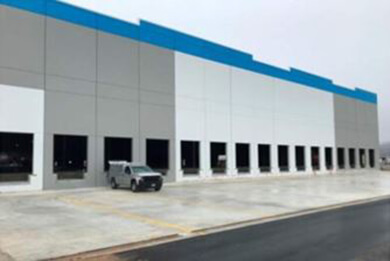Equity Help Makes The World of CRE Investing Go Round
Despite uncertainty driven by the COVID-19 pandemic, equity sources remain interested in commercial real estate deals. Private equity and institutional investors are both active, particularly in the favored multifamily and industrial asset classes, which boast healthy market fundamentals.
This narrowing of investor focus means more capital choices for solid industrial or apartment deals. Multifamily and industrial reign as the most attractive asset classes now, but some active equity sources want to be the first to find the next opportunity for yield.
Equity sources may not currently be pursuing retail or office, but we anticipate select opportunities in those sectors including office redevelopment, suburban office, and distressed retail repurposing will attract interest.
On a positive note, some office properties have benefited from solid cash flow due to long-term leases. Select retail properties including those deemed “essential” have performed well. Since early 2020, equity has come from new sources, including sovereign money and new life company programs, with most concentration in three primary categories: Opportunity Zones, value-add deals, and development.
OPPORTUNITY ZONES
OZ investment has picked up both in OZ funds raising capital and transactions closing. NorthMarq arranged $45 million in Opportunity Zone (OZ) equity for a multifamily development in Seattle as well as OZ equity for a luxury, high-rise apartment development near Washington, D.C.
The OZ program created under the Trump administration was introduced as a vehicle to inject private-sector investment into economically distressed neighborhoods. Those investing in OZs may benefit from capital gains tax incentives including the ability to defer paying capital gains tax if they hold the investment for 10 years. This is year three of the 10-year program, so there is a limited window to take advantage of the tax incentives.
When the program was first launched, billions of dollars in investment funds were announced. However, OZ equity providers that have the capital to launch these often very large projects are a pretty limited group. Developers are finding that even though the project is in an OZ, it still has to work as a fundamentally sound real estate transaction. Currently, wealthy family offices are driving much of the activity and are increasing their OZ allocations.
VALUE-ADD TRANSACTIONS
Multifamily value-add deals are growing larger, resulting in a need to find new and larger sources of equity. Value-add investors plan to improve a property, management, and/or operations to create new value. Due to delayed investing by some traditional institutional equity sources, sponsors (primarily on behalf of private buyers) seek to forge new relationships to advance or secure available opportunities. Sponsors are looking to nontraditional equity sources, which are seeking opportunities in low-barrier, high-growth markets like the Sun Belt states.
An example of this Sun Belt boom is a NorthMarq recently capitalized 582-unit multifamily complex in Mesa, AZ. NorthMarq raised debt and equity for the acquisition on behalf of its client. The collaborative corporate platform raised equity from private, foreign capital, and closed within 30 days. NorthMarq also sourced an attractive 80% LTV floating rate Freddie Mac loan and was able to increase proceeds and decrease the interest rate during the closing process.
The equity available for both multifamily and industrial is extensive and includes preferred equity, JV, and hybrid-preferred financing (a hybrid of debt and equity), with creative financing available for both sectors. Hybrid-preferred financing will typically fund high in the capital stack thus minimizing a sponsor’s capital requirement. The hybrid cost of capital is well below most traditional joint venture equity, and a good option to evaluate for projects with strong anticipated upside.
Meanwhile, seeking yield, more foreign investors are looking to enter U.S. real estate, and that also is creates new sources of capital.
DEVELOPMENT
Equity is available for both multifamily and industrial development. In industrial, the pandemic accelerated the shift to e-commerce, resulting in increasing demand for logistics real estate. Some developers are seeking partners to invest some equity in a build-to-sell platform. Since industrial development is extremely sought-after, projects are being snapped up by large institutions well prior to construction completion. Some life companies are now offering high-leverage construction loan programs that fit either a build-to-sell or build-to-refinance strategy.
In one recent example, NorthMarq’s Salt Lake City arranged a $165 million debt package for three industrial build-to-suit properties, with equity coming from partnerships coordinated with the developer. The three properties, all located in the Salt Lake City area, total 583,000 sq. ft. and will house a distribution company’s operations. The developer has a long track record of successful projects, becoming a preferred developer in the SLC market. That success made the projects attractive to outside investors.
WHAT TO WATCH FOR AS A BORROWER
One of the biggest challenges to getting deals done is not being able to physically tour assets. Additionally, first-time fund managers may face difficulties in the equity market. Despite challenges, developers, and sponsors with strong track records are successfully raising capital.
WHAT LIES AHEAD?
While multifamily and industrial currently reign, equity sources will continue seeking new opportunities in 2021. For multifamily, Fannie Mae, Freddie Mac, and HUD have consistently provided capital throughout the cycle, and that is expected to continue.
In office, select iconic assets and buildings adapting new safety COVID-19 precautions are anticipated to drive demand. The sector may lag, as tenants reevaluate space needs and become comfortable having employees return to the office.
Retail has endured significant distress, however, select assets — particularly grocery-anchored centers — have proven they can outperform during downturns, buoying investor demand. Additionally, more equity sources seeking yield may look to acquire retail assets at distressed pricing, weathering a period of minimal current cash flow in exchange for the deep discount.
For capital sources, we anticipate an evolution within life companies as they seek new, creative ways to generate yield. Strategies could include new products on the higher risk spectrum. Life companies will continue to morph in what will be a very dynamic market.




